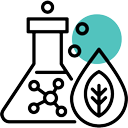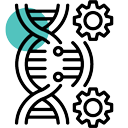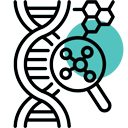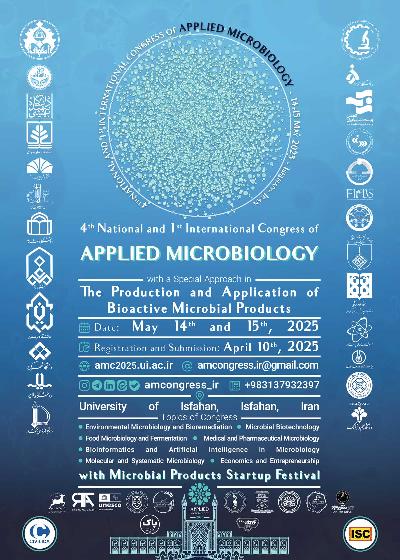
:: Topics of Congress
Topics of AMCongress
The International Congress of Applied Microbiology is held in 7 main topics, each of which has its own sub-topics.

Environmental Microbiology and Bioremediation


Food Microbiology and fermentation

Medical and pharmaceutical Microbiology



Environmental Microbiology and Bioremediation
Microorganisms are the oldest living species on Earth and can be found everywhere, from the depths of the ocean to the bottom of the forest, even in extreme environments. Environmental Microbiology is the study of how bacteria interact with one another and others, including their effects on the environment, the spread of germs and germs, the spread of algae, fungi and microbes and their related effects on human health and the environment. Environmental microbiology is also exploring how germs can be used to solve earth's problems. For example, an ecologist might study microbiology to clean oil spills or other contaminants or use biologically active organic compounds for medicinal purposes, sunscreens, and water purification solutions. Researchers across the US have discovered a common marine virus that can kill the red tide, a dangerous alga that has been growing in recent years. Scientists here at UF have even discovered a way to combine shinorine into a microbe, allowing the production of safe and environmentally friendly sunscreens.
• Spread of viruses
• Bacteria
• Algae
• Fungi
• Parasitical organisms
Bioremediation is a branch of biotechnology that utilizes the use of organic matter, such as microbes and bacteria, in removing contaminants, pollutants, and toxins from soil, water, and other sources.
• Pollutant and Xenobiotic Biodegradation
• Surfactants and Biosurfactants on Hydrocarbon Biodegradation
• Role of Adsorption in the Biodegradation Process
• Enzyme and Bacterial Immobilization
• Impact of Pollutants on The Microorganism Cells
• Physical or Electrochemical Methods
• Biotransformation
Microbial Biotechnology
Microbial biotechnology or industrial microbiology is the use of microbes to obtain an economically important product or activity on a commercial or large scale. Microorganisms used in industrial processes are natural, selected by flexible laboratories, or genetically modified species. Microbial biotechnology is a dynamic and exciting field of biomedical science that specializes in the diversity and diversity of products and services that provide and contribute to, such as disease prevention and treatment, diagnostics, agriculture and horticulture, nutrition, and provision.
• Protein engineering
• Functional genomics
• Metabolic engineering
• Metabolic design
• Bio-nanotechnology
• Biosurfactants and bio-emulsifiers
• Compatible solutes and bioprotectants
• Green chemistry
• Primary metabolites
• Food, beverages, and supplements
Food Microbiology and fermentation
Food microbiology compels research into bacteria that take up colonization, mutate, process, or contaminate and degrade food. It is one of the most diverse research areas within microbiology. It includes a wide variety of microorganisms including spoilage, probiotic, fermentative, and pathogenic bacteria, fungi, yeast, bacteria, prions, and parasites. It is responsible for a variety of foods and beverages, which include many different organic substances, which may contribute to the survival and growth of bacteria. Food microbiology incorporates microorganisms that are beneficial or detrimental to food quality and safety and therefore may be concerned with public health.
• Fermentation
• Lactococcus
• Leuconostoc
• Pediococcus
• Lactobacillus
• Streptococcus thermophiles
• Food safety
• Microbial biopolymers
• Food testing
Medical and pharmaceutical Microbiology
Medical microbiology, a major subset of medical microbiology, is a branch of medical science that specializes in the prevention, diagnosis, and treatment of infectious diseases. In addition, this field of science is studying various clinical uses of bacteria to improve health. There are four types of viruses that cause infectious diseases: bacteria, fungi, parasites, and bacteria, and one type of infectious protein called a prion.
• Diagnostic tests
• Microbial culture
• Microscopy
• Biochemical tests
• Polymerase chain reaction
• Treatments
Pharmaceutical microbiology is a specialized area of microbiology and is concerned with the use of microbes in the development of drugs and the maintenance of pollution control. The most important contribution of microbiology to the pharmaceutical industry is the development of antibiotics. All antibiotics were originally products of microbial metabolism, but recent genetic modification has led to the development of improved drugs.
• Drug safety
• Antimicrobial activity and disinfection
• Methods and specifications
• Cleanrooms and controlled environments
• Pharmaceutical products
• Anti-infective agents
Molecular and systemic Microbiology
Molecular microbiology is concerned with the cellular and biological processes of viruses and their use in the production of biotechnology products and drugs such as vaccines, antibodies. It also involves the development of the pathogenicity of microbes.
• Microbial enzymes
• Microbial metabolites
• Microbial cells
• Microbial membranes
• Microbial pathogens
• Molecular genetics
Systematic Microbiology is the branch of microbiology that deals with the classification, taxonomy, and evolutionary relationships of microorganisms. It involves organizing and identifying microorganisms based on their genetic, physiological, biochemical, and ecological characteristics to understand their diversity and evolutionary lineage.
• Microbial Taxonomy and Classification
• Phylogenetics and Evolution of Microorganisms
• Techniques in Microbial Systematics
• Biodiversity of Microorganisms
• Applications of Systematic Microbiology
Bioinformatics and Artificial intelligence in Microbiology
Bioinformatics builds a bridge between tracking and biological data for living / living things. Once the nucleotide sequence has been determined, the first step in analyzing bioinformatics sequencing is to predict genetic predisposition by finding open reading frames (ORFs). Despite being a small field, bioinformatics has assisted both basic microbiology and biotechnology with the development of algorithms, tools, and discoveries that refine the invisible model of cellular function.
• Genome analysis
• Sequence analysis
• Phylogenetics
• Structural bioinformatics
• Gene expression
• Genetics and population analysis
• Systems biology
• Data and text mining
• Databases and ontologies
• Bioimage informatics
Economics and Entrepreneurship
Economics and entrepreneurship in microbiology involve applying economic principles and entrepreneurial skills to the field of microbiology. This includes developing and commercializing microbial technologies, managing resources for microbiological research and innovation, creating startups, and addressing global challenges such as health, agriculture, and the environment using microbiological solutions.
• Microbial products and Business Opportunities
• Economic Impact of Microbial Innovations
• Entrepreneurial Strategies in Microbiology
• Microbial Applications in Industry
• Policy and Regulation in Microbial Entrepreneurship
• Market Trends and Consumer Demands
ISC


Required files
Topics of Congress

Environmental Microbiology and Bioremediation


Food Microbiology and fermentation

Medical and pharmaceutical Microbiology



poster

All rights reserved by .
Designed By : Hamayeshnegar ( Online portal management and Arbitration Conference ) ver.11.0.1
